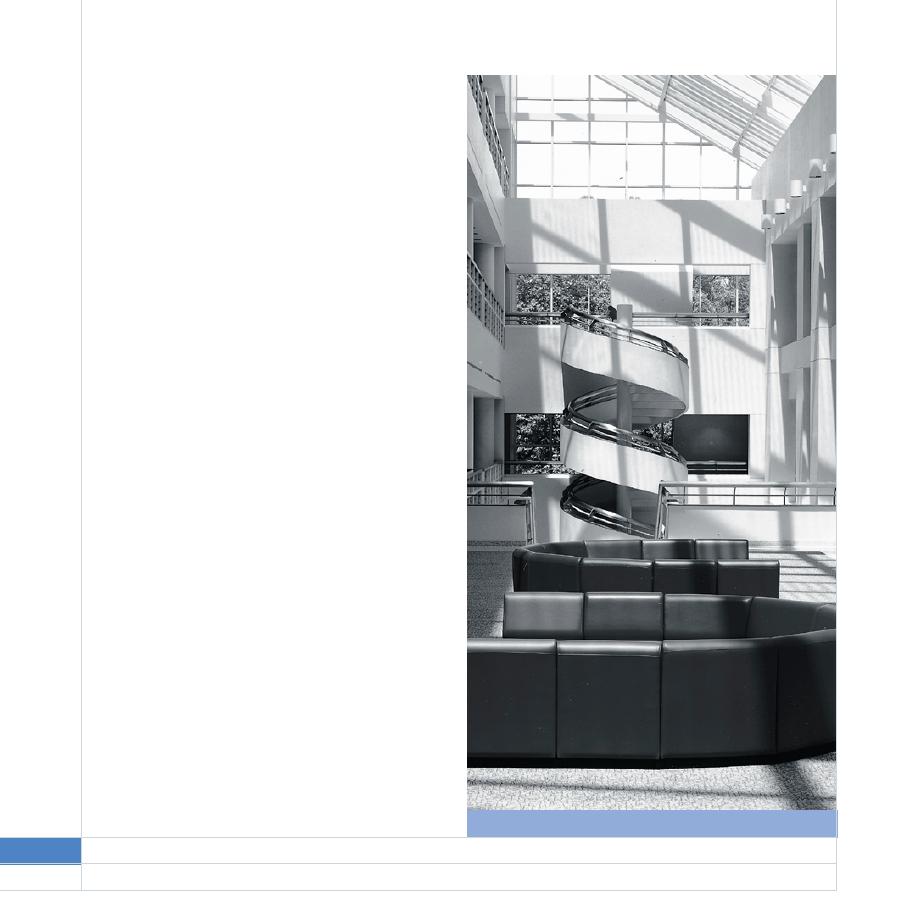
Elevators
Passenger elevators usually receive the highest amount of
traffic in the facility. Their finishes should relate to the
entrance and lobby areas and should be focal points for
the interior design of the building. Although finishes need
to be durable, high quality architectural design of cabs
and entrances is a priority.
Floors. Elevator floors receive a great amount of wear in a
very concentrated area. The flooring surface shall be either
extremely durable or easily replaceable. Hard surface
floors, such as stone, brick or tile, are usually poor choices
because cab floors tend to be unstable. Over time, grouted
materials often loosen or crack. Carpet, wood or high
quality resilient materials are better choices and perform
well acoustically. Carpet materials should be selected for
low pile height and high density.
Walls. Wall materials shall present a high quality image
and should be sufficiently durable to take some abuse.
Materials shall be installed on removable panels or other
replaceable devices to facilitate maintenance and renewal
of finishes.
Ceilings. Ceilings shall be replaceable. In passenger
be used.
Doors. Surfaces should be scratch resistant and easily
replaced or refinished. Inside and outside finishes should
be coordinated with adjacent wall surfaces.
very durable and easy to clean. Stainless steel walls and
doors are preferred. Flooring shall be sheet vinyl or
resilient vinyl tile. Ceiling light fixtures must be recessed
and protected from possible damage.
National Archives, College Park, MD
96 F A C I L I T I E S S T A N D A R D S
FOR THE
PUBLIC
BUILDINGS
SERVICE
3.6 Interior Finishes
Revised March 2005 PBS-P100


 Previous Page
Previous Page
